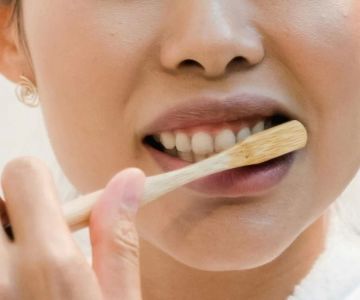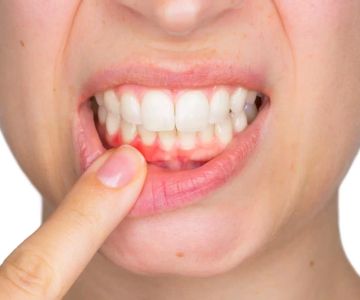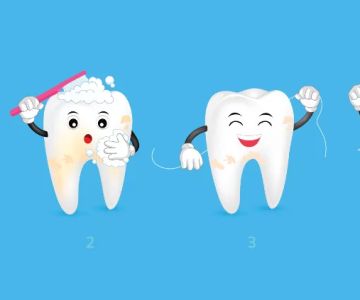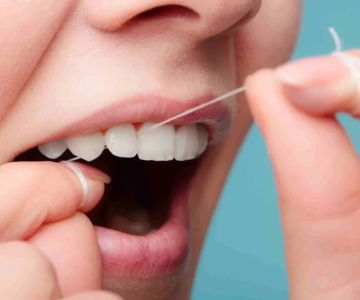Maintaining good oral health is essential for your overall well-being, and regular checkups with your dentist are important. However, it's also crucial to stay on top of your oral hygiene between visits. A self-check for oral health can help you catch potential issues early and take action before they become more serious. Whether you’re looking to maintain a healthy smile or need to address minor concerns, here’s everything you need to know about performing a self-check for oral health.
- 1. Checking Your Gum Health
- 2. Identifying Signs of Tooth Decay
- 3. Understanding Bad Breath and Its Causes
- 4. Dealing with Tooth Sensitivity
- 5. Tips for Maintaining Proper Oral Hygiene
1. Checking Your Gum Health
One of the first things to check when performing a self-check for oral health is your gums. Healthy gums are typically pink and firm, but if you notice redness, swelling, or bleeding when brushing or flossing, it might be a sign of gum disease. Gingivitis, the earliest stage of gum disease, can often be managed with proper brushing and flossing, but if left untreated, it can progress to more severe conditions like periodontitis.
Personal Story: Early Warning Signs
Alice, a 34-year-old from California, shared that she started noticing her gums were bleeding slightly while flossing. After doing some research and performing a self-check, she realized her gums were slightly inflamed. She immediately booked an appointment with her dentist, who diagnosed her with early-stage gingivitis. With consistent care and better flossing habits, Alice was able to reverse the condition before it became a serious issue. This experience highlights how a self-check can help you catch issues early on.
2. Identifying Signs of Tooth Decay
Tooth decay is another common oral health concern that can be identified during a self-check. Check for any visible holes or discoloration in your teeth, as these are typical indicators of cavities. Additionally, tooth sensitivity or discomfort when consuming hot, cold, or sweet foods may suggest that a cavity is forming. If you notice any of these symptoms, it’s time to schedule a dental appointment for an official checkup.
Personal Story: Cavity Discovery
John, a 28-year-old from Texas, was surprised when he noticed a small brown spot on one of his molars during his morning check in the mirror. After examining it closely, he realized the spot was causing sensitivity to cold drinks. He decided to get it checked, and it turned out he had a cavity forming. His dentist filled it quickly, preventing further damage. Regular self-checks helped him avoid a more severe problem.
3. Understanding Bad Breath and Its Causes
Persistent bad breath, or halitosis, is another red flag in your self-check for oral health. While it’s common to have occasional bad breath after eating certain foods, persistent bad breath could be a sign of underlying issues such as gum disease, tooth decay, or even more serious conditions like digestive problems. If your bad breath doesn’t go away after brushing and flossing, it’s important to consult a dentist for a thorough evaluation.
Personal Story: The Bad Breath Issue
Susan, a 45-year-old from New York, had been struggling with bad breath for months. Despite brushing and flossing regularly, her breath never seemed to improve. After performing a self-check, she realized her gums were swollen, which led her to suspect gum disease. Her dentist confirmed her suspicions and treated her condition. The experience made Susan realize the importance of not ignoring warning signs and seeking professional care early on.
4. Dealing with Tooth Sensitivity
Tooth sensitivity is a common issue that can also be detected during a self-check for oral health. If you experience discomfort or sharp pain when eating cold or hot foods, or even when brushing, this could indicate tooth enamel erosion or a dental issue. Sensitivity can often be managed with special toothpaste, but it’s important to identify the cause to prevent further damage to your teeth.
Personal Story: Managing Sensitivity
Ben, a 40-year-old from Florida, had noticed sensitivity in his teeth, especially when drinking cold beverages. After doing some research and performing his self-check, he discovered that his brushing technique was too aggressive, wearing down the enamel. With the help of his dentist, Ben adjusted his brushing habits and started using toothpaste designed for sensitive teeth. His sensitivity gradually improved, showing how a self-check can lead to better oral habits.
5. Tips for Maintaining Proper Oral Hygiene
To maintain good oral health, regular brushing, flossing, and rinsing with mouthwash are essential. Make sure to brush your teeth twice a day for at least two minutes, using fluoride toothpaste to help prevent decay. Flossing daily removes plaque and food particles between your teeth, where a toothbrush can’t reach. Additionally, regular use of mouthwash can help reduce bacteria and maintain fresh breath.
Expert Advice: Expert Tips for Healthy Teeth
Dr. Emily, a dentist from New York, emphasizes that consistency is key to maintaining oral health. “Performing a self-check for oral health is important, but the best way to ensure healthy teeth and gums is to stick to a regular oral hygiene routine. Don’t forget to visit your dentist for professional cleanings and checkups every six months,” she advises. Following these tips and incorporating them into your daily routine can keep your smile healthy and bright.
Taking the time to perform a self-check for oral health can help you identify problems early, prevent costly dental procedures, and ensure a healthy smile. If you notice any issues, don’t hesitate to consult with a professional. For more tips on oral health and to find trusted dental care products, visit Dentistry Toothtruth today!







 Westgate Dental Arts3.0 (2 review)
Westgate Dental Arts3.0 (2 review) Coventry Family Dental4.0 (247 review)
Coventry Family Dental4.0 (247 review) Familia Dental3.0 (1028 review)
Familia Dental3.0 (1028 review) Dr. Daniel S. Fife, DDS4.0 (31 review)
Dr. Daniel S. Fife, DDS4.0 (31 review) Dentistry At Suburban Square: Michael I. Wollock, DMD4.0 (1228 review)
Dentistry At Suburban Square: Michael I. Wollock, DMD4.0 (1228 review) Comfort Care Dental4.0 (1156 review)
Comfort Care Dental4.0 (1156 review) The Importance of Oral Health Education During Pregnancy for a Healthy Pregnancy
The Importance of Oral Health Education During Pregnancy for a Healthy Pregnancy Why Skipping Dental Checkups Can Lead to Bigger Oral Health Problems
Why Skipping Dental Checkups Can Lead to Bigger Oral Health Problems Best Tips for Brushing Your Teeth Properly for Healthy Gums: Essential Techniques for Oral Health
Best Tips for Brushing Your Teeth Properly for Healthy Gums: Essential Techniques for Oral Health Advantages of Porcelain Dental Restorations
Advantages of Porcelain Dental Restorations How Can Diabetes Cause Tooth and Gum Problems? Preventing and Managing Oral Health Issues
How Can Diabetes Cause Tooth and Gum Problems? Preventing and Managing Oral Health Issues Healthy Habits for Promoting Good Oral Health and Hygiene: Tips for a Healthy Smile
Healthy Habits for Promoting Good Oral Health and Hygiene: Tips for a Healthy Smile